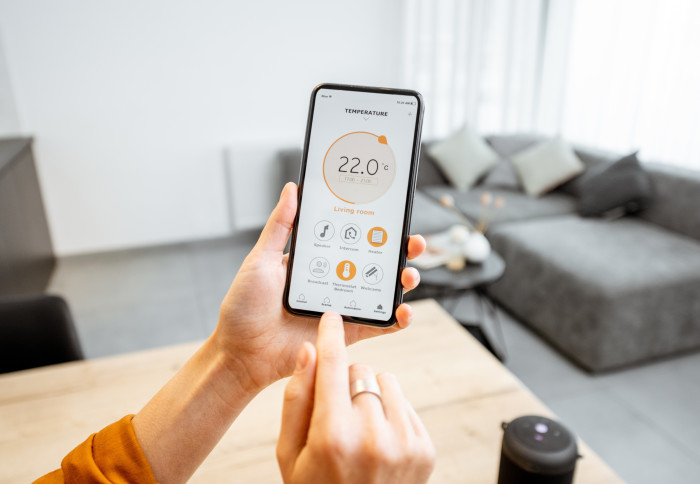Smart electric heating could slash household emissions and energy bills

Urgent progress is needed to reduce the greenhouse gas emissions generated by domestic heating, a new report warns.
Smart and Flexible Electric Heat, the latest briefing paper published by Energy Futures Lab, makes a series of recommendations to accelerate the adoption of smart heat technologies that have the potential to dramatically reduce the carbon footprint of UK homes.
The report calls for coordinated support of four key elements for enabling smart, flexible and cost-effective electric heating: low-carbon heating systems, cost-reflective electricity pricing, thermally efficient buildings and smart storage devices.
Lead author Dr Richard Carmichael said the decarbonisation of heating was among the biggest challenges the UK faces for meeting its Net Zero target but that it has received less attention than other sectors.
“Decarbonising heat is going to be complex and costly and it’s going to involve consumers adopting new technologies because heat is generated largely within the home. It will take time to roll out new products and services, so we urgently need to begin that process in earnest”.
Electrifying heat
Low-carbon electric heating systems will play an important role in decarbonising domestic heat, but the widespread adoption of these systems will significantly increase electricity demand, requiring a potentially large increase in renewable generation and creating challenges for balancing supply and demand.
Smart controls and storage devices, coupled with more efficient buildings and cost-reflective electricity pricing, would help reduce the strain on the grid by enabling and rewarding load-shifting (moving electricity consumption to periods of lower demand), reducing energy bills and improving comfort levels for consumers at the same time.
“By valuing and enabling flexible heat loads, we can dramatically cut costs and carbon both for consumers and at a system level”, says Jenny Hill, Head of Buildings, Industry and Bioenergy at the Committee on Climate Change.
The incentives for suppliers to introduce cost-reflective electricity tariffs remain weak, however, and the report calls for a ‘flexibility first’ approach to new regulation that improves access to the full market value of flexibility in household electricity demand.
“Some of the time-of-use tariffs you’re seeing are real tariffs but most of them are gamified at the moment, so we’re still playing in this market; we’re not actually delivering real value through into this market and that has to change. That has to be led in part by regulation and regulatory reform,” says Juliet Davenport OBE, founder and CEO of Good Energy.

Overcoming barriers to adoption
Take-up of smart electric heating products remains low in the UK and the report identifies the up-front costs associated with upgrading heating systems as one of the major barriers for consumers.
Heat pumps, for example, are proven, reliable and remarkably efficient, offering thermal outputs several times their electricity input, but the cost of installing a heat pump puts many households off making the change.
Setting standards for smart appliances and stipulating them as a requirement for Clean Heat Grants for smart heat pump installations could make this technology a more attractive proposition and help deliver flexibility, the report suggests.
Greater use of data, ICT and digital tools also has an important role to play in helping consumers engage with unfamiliar products and services and make the transition to smart heating systems, according to Dr Richard Carmichael.
Data on the real-world performance of heating technologies, for example, could be of use for policymakers and industry but could also help consumers.
“Price comparison tools that let people share their smart meter data and included smart tariffs – such as Good Energy’s new heat pump tariff - would allow people to get quicker, more accurate and tailored comparisons and reduce uncertainty about time-of-use pricing - especially when combined with technology that enables flexible consumption - and would incentivise suppliers to bring these sorts of products to market,” he says.
Energy efficiency
Another significant barrier to the success of smart electric heat is building efficiency. At present, 70% of UK homes do not meet the Energy Performance Certificate rating of C and improvements to housing stock have stalled.
“The existing building stock is not fit for purpose; it’s one of the least efficient in Europe and data from some of the smart thermostat manufacturers show this very clearly. That’s something that needs to be addressed,” says Dr Jan Rosenow, Director of European Programmes, Regulatory Assistance Project.
The report concludes that building efficiency retrofitting could lower barriers to adoption of low-carbon heating systems and storage technologies and contribute to a green recovery from the COVID-19 pandemic.
Article text (excluding photos or graphics) © Imperial College London.
Photos and graphics subject to third party copyright used with permission or © Imperial College London.
Reporter
Conor McNally
The Grantham Institute for Climate Change